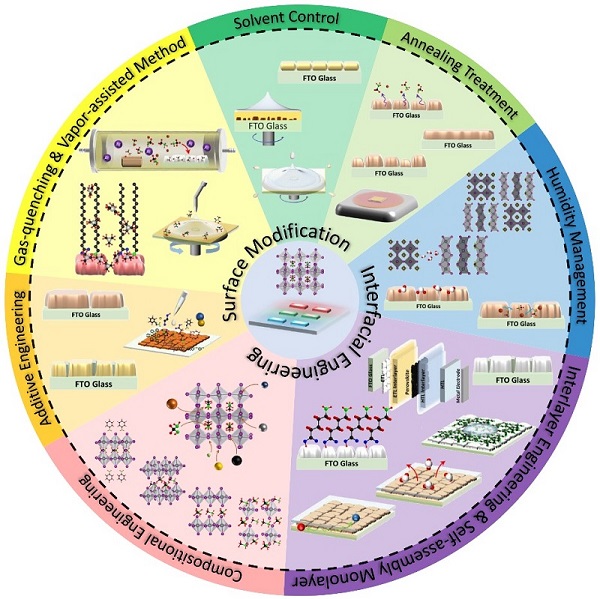Dr. Sam Hsu's paper published in Nano Energy (IF: 15.548)

Energy conversion is an essential topic in energy and environmental research. The conversion efficiency and device’s stability are the most significant concerns for sustainable development. Dr. Sam Hsien-Yi Hsu, Assistant Professor of SEE, has recently published a paper entitled “Recent progress in surface modification and interfacial engineering for high-performance perovskite light-emitting diodes” in Nano Energy with the impact factor of 15.548. Hybrid Perovskites, i.e., methylammonium lead iodide (MAPbI3) and methylammonium lead bromide (MAPbBr3), have attracted much attention for highly applicable perovskite light-emitting diodes (PeLED) as a result of its high color purity, tunable emissions, high carrier mobility, adjustable band gap, tunable exciton binding energy, as well as high photoluminescence quantum yield.
Dr. Sam Hsu and his team summarized state-of-the art methodologies for the surface modification on participated films in PeLEDs as well as interfacial engineering to effectively facilitate the charge transfer in PeLEDs. These methodologies include compositional engineering, additive engineering, annealing treatment, humidity management, solvent control, gas-quenching and vapor-assisted method, as well as interlayer engineering and self-assembly monolayer. By utilizing these techniques, we could achieve smooth surface morphologies and grow uniform perovskite films, thereby enhancing the device performance as well as providing profound scientific significance for the field of PeLEDs.